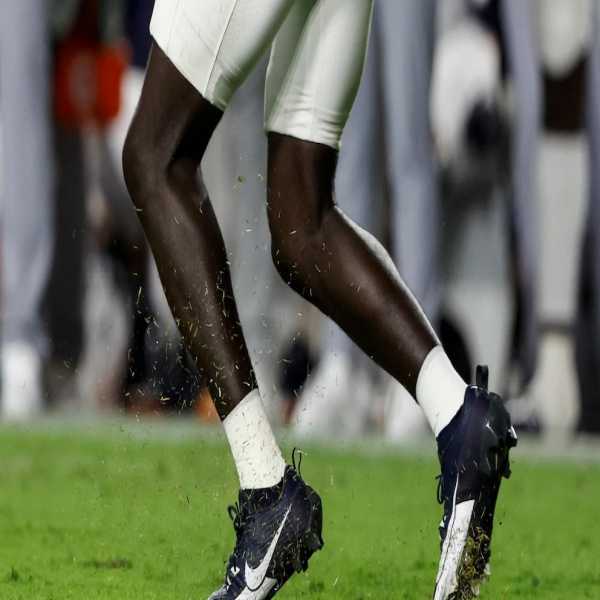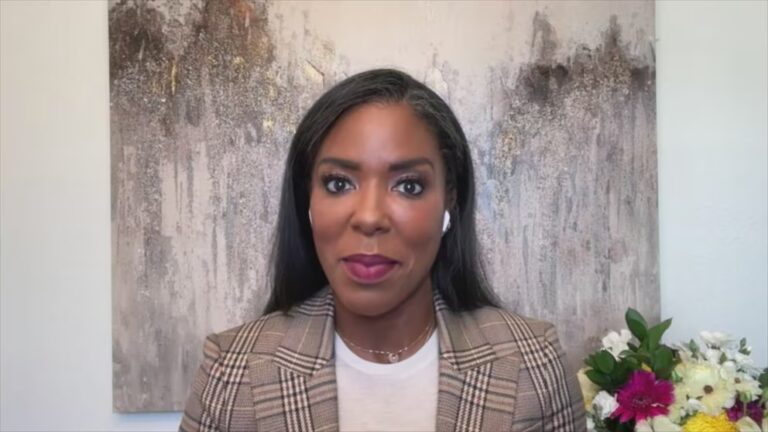
A player runs as he gets traction in the natural turf during the first half of an NCAA college football game between Auburn and Samford on Sept. 16, 2023, in Auburn, Ala. Most of the grass fields in top level of Division I are in the South, Southwest and California. (AP Photo/Butch Dill)The Associated Press
When a new football stadium was built at South Alabama, located in one of America's rainiest cities, the decision was made to go with an artificial turf playing surface.
At San Diego State, where the weather seems almost always perfect, going with a grass field was an easy choice — but not the usual one in major college football.
Of the 133 schools that currently compete in the top-tier of NCAA Division I, 94 have artificial surface football fields (71%) and 39 have grass (29%), most of those at Power Five schools that can afford the upkeep and maintenance. A half-century ago, there were 74 such schools playing on natural grass and the number actually peaked at 75 around 20 years ago.
It has plummeted since, even with more money flowing into Power Five school coffers from billion-dollar TV contracts.
The topic is a complicated one with some schools (Arkansas and Mississippi, for example) switching four times in the past century and others such as Michigan and Ohio State changing surfaces three times.
Many schools find turf is cheaper to maintain, particularly for concerts or other non-athletic events, even though there are concerns about athlete injuries.
When Aaron Rodgers went down with an injury just a few plays into his first season with the New York Jets, it reignited calls from NFL players for natural grass fields for their safety (about half of the 30 NFL stadiums use grass).
In major college football, the players don't have a union behind them to voice concerns. Some do have a preference.
“I would much rather (play) on grass,” said Wisconsin quarterback Tanner Mordecai, who has played on turf for the Badgers and at SMU and on grass for Oklahoma. “I don't know all the studies and all that, but I do know that it feels better. Just feels better on your joints and your bones. It doesn't feel like you beat yourself up as much.”
Some studies — including one using NCAA injury surveillance data from 2004-14 — have concluded playing football on artificial surfaces increases the frequency of certain lower body injuries. Experts, though, are hesitant to draw definitive conclusions.
"The preliminary studies have shown that there is an increase in injury risk to the lower extremity on synthetic surfaces vs. grass,” said Bud Cooper, clinical professor in the department of kinesiology at the University of Georgia . “Now, is that the Bible? It is not.”
Most of the grass fields in top level of Division I are in the South, Southwest and California, including San Diego State's new $310 million stadium that opened about a year ago. Derek Grice, the former associate athletic director at San Diego State, said climate was a key factor in choosing grass. The growing season is relatively constant.
Aside from being the home of the Aztecs, plans for Snapdragon Stadium include professional soccer and becoming a destination for international clubs and competition. That requires a grass playing surface.
Grice has worked at other schools where determining what surface to use in a facility wasn't so clear cut. Ideal conditions don't always exist and the quality of artificial turf is improving, he said.
“I believe if you look at it a majority of athletes are going to prefer to play on grass. If it's a well-maintained surface,” Grice said.
And there's the catch.
“I think it honestly depends on the grass," Ohio State quarterback Kyle McCord said. "I feel like the turf — especially around the Big Ten — is pretty consistent. I would say good grass is better than turf, but I think overall just turf because you know what you’re going to get with it.”
First-year Nebraska coach Matt Rhule, who has also coached in the NFL, had the practice fields in Lincoln changed to grass. The Cornhuskers' Memorial Stadium has artificial turf.
“Injuries happen on everything. I don’t ever like one thing to be the end all, be all. But I’m a grass fan,” Rhule said. "That’s why I made the practice fields grass so that we can have more reps on the softer surface.”
South Alabama's Hancock Whitney Stadium opened in 2020. Athletic director Joel Erdmann said the school went with FieldTurf, the most common artificial surface among Bowl Subdivision schools, in large part because Mobile, Alabama, gets so much rain.
“If you’re going to have a natural grass field, especially in our climate, you’re going to have to have a very robust drainage system,” he said.
Erdmann said the cost of the synthetic surface South Alabama uses was about $1.6 million and estimated the initial cost of a grass field would have be similar.
“But then I think what you run into is the annual maintenance costs,” he said. "Instead of having two grounds guys, you’ve got six. And you’ve got a $60-, $70,000 mower that needs to have maintenance."
In the future, weighing the cost of turf vs. grass might also include legal fees.
Jennifer Steinmetz, an attorney with Tucker Ellis who has defended manufacturers and distributors against product liability claims, said in email that turf fields in football and other sports could be ripe for litigation.
“While we anticipate that turf manufacturers will be the primary target, colleges do face potential liability,” she said.
Ramogi Huma, the executive director of the National College Players Association, compared concerns about playing surfaces to head injuries. Eventually, pressure by the NFLPA forced the NFL to adopt mandatory concussion protocols, but that doesn't exist in college football because the athletes don't have representation.
For some players, the playing surface doesn't much matter.
“Shoot, we used to play in the street and on rocks when I was little,” Texas defensive back Jahdae Barron said.
___
AP Sports Writers Eric Olson in Lincoln, Nebraska; Mitch Stacy in Columbus, Ohio; Jim Vertuno in Austin, Texas; and Steve Megargee in Madison, Wisconsin, contributed.
___
Follow Ralph D. Russo at https://twitter.com/ralphDrussoAP and listen at http://www.appodcasts.com
___
AP college football: https://apnews.com/hub/college-football and https://apnews.com/hub/ap-top-25-college-football-poll
Sourse: abcnews.go.com






